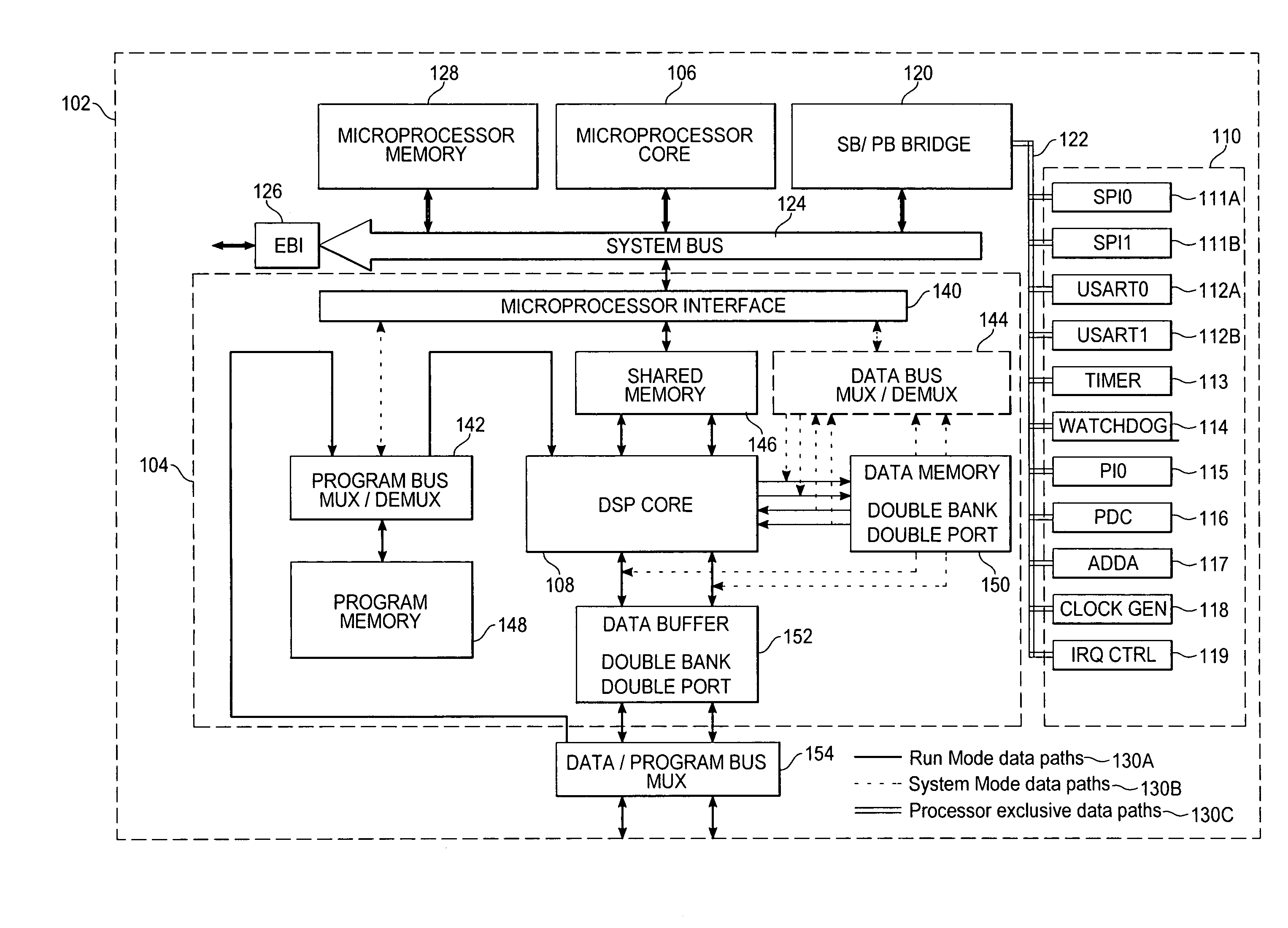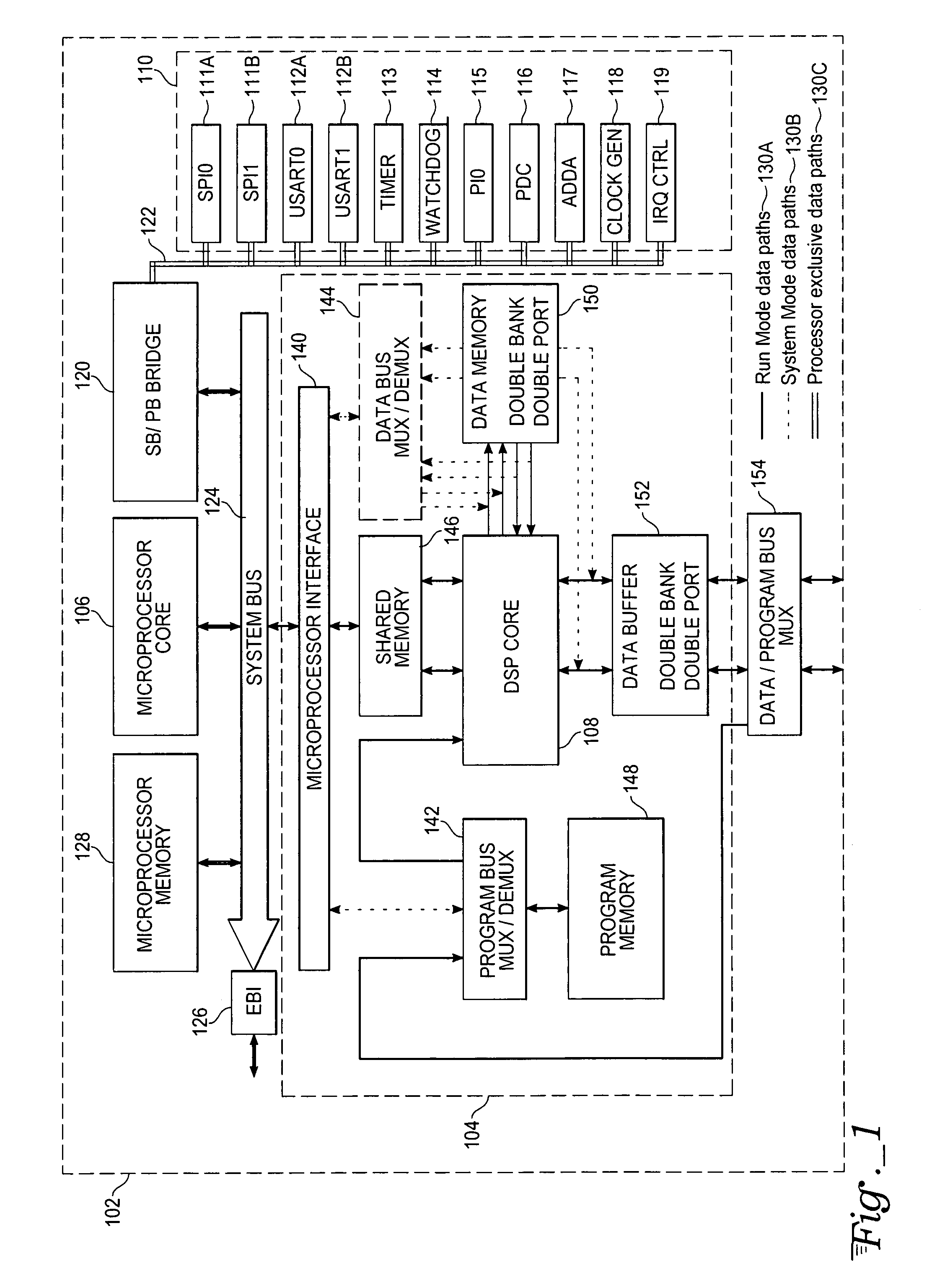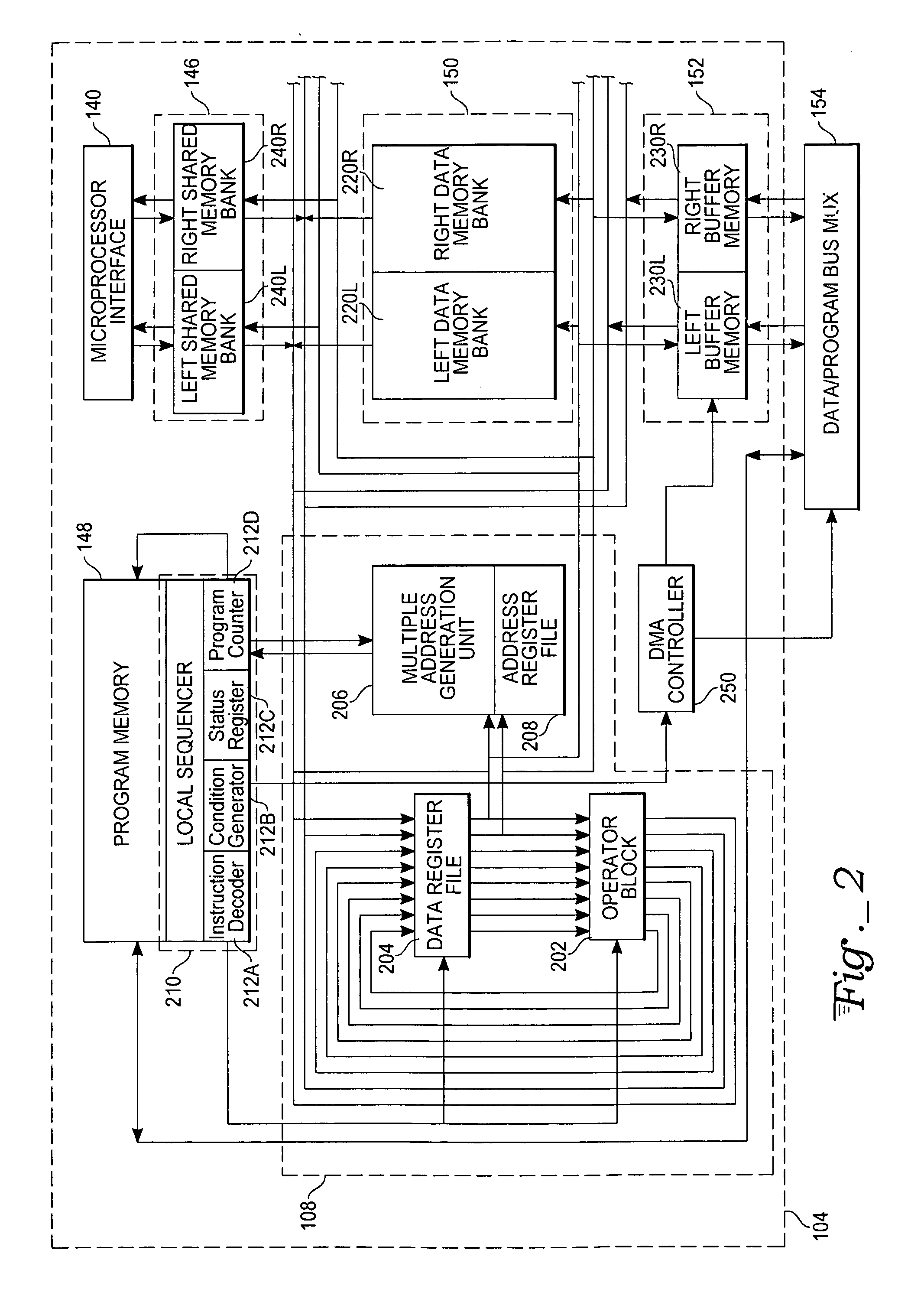Complex domain floating point VLIW DSP with data/program bus multiplexer and microprocessor interface
a multi-processor and multi-domain technology, applied in the field of multi-processor systems, can solve problems such as algorithm development and adaptation
- Summary
- Abstract
- Description
- Claims
- Application Information
AI Technical Summary
Benefits of technology
Problems solved by technology
Method used
Image
Examples
Embodiment Construction
[0032]With reference to FIG. 1, an exemplary embodiment of the general architecture of a system on chip (SoC) 102 includes a floating-point digital signal processor (DSP) subsystem 104, a microprocessor core 106, and a peripheral circuits 110. In a specific embodiment, the microprocessor core 106 is an ARM7TDMI™ ARM Thumb processor core and the floating-point DSP subsystem 104 further comprises a digital signal processor (DSP) core 108 which is an Atmel® mAgic high performance very long instruction word (VLIW) DSP core. The peripheral circuits 110 communicate with a system bus / peripheral bus bridge 120 by means of a peripheral bus 122. The system bus / peripheral bus bridge 120 is coupled to a system bus 124. The system bus 124 is coupled to an external bus interface 126 which generates signals that control access to external memory or peripheral devices. A microprocessor memory 128 is coupled to the system bus 124.
[0033]The system on chip 102 of the exemplary embodiment has two modes...
PUM
 Login to View More
Login to View More Abstract
Description
Claims
Application Information
 Login to View More
Login to View More - R&D
- Intellectual Property
- Life Sciences
- Materials
- Tech Scout
- Unparalleled Data Quality
- Higher Quality Content
- 60% Fewer Hallucinations
Browse by: Latest US Patents, China's latest patents, Technical Efficacy Thesaurus, Application Domain, Technology Topic, Popular Technical Reports.
© 2025 PatSnap. All rights reserved.Legal|Privacy policy|Modern Slavery Act Transparency Statement|Sitemap|About US| Contact US: help@patsnap.com



